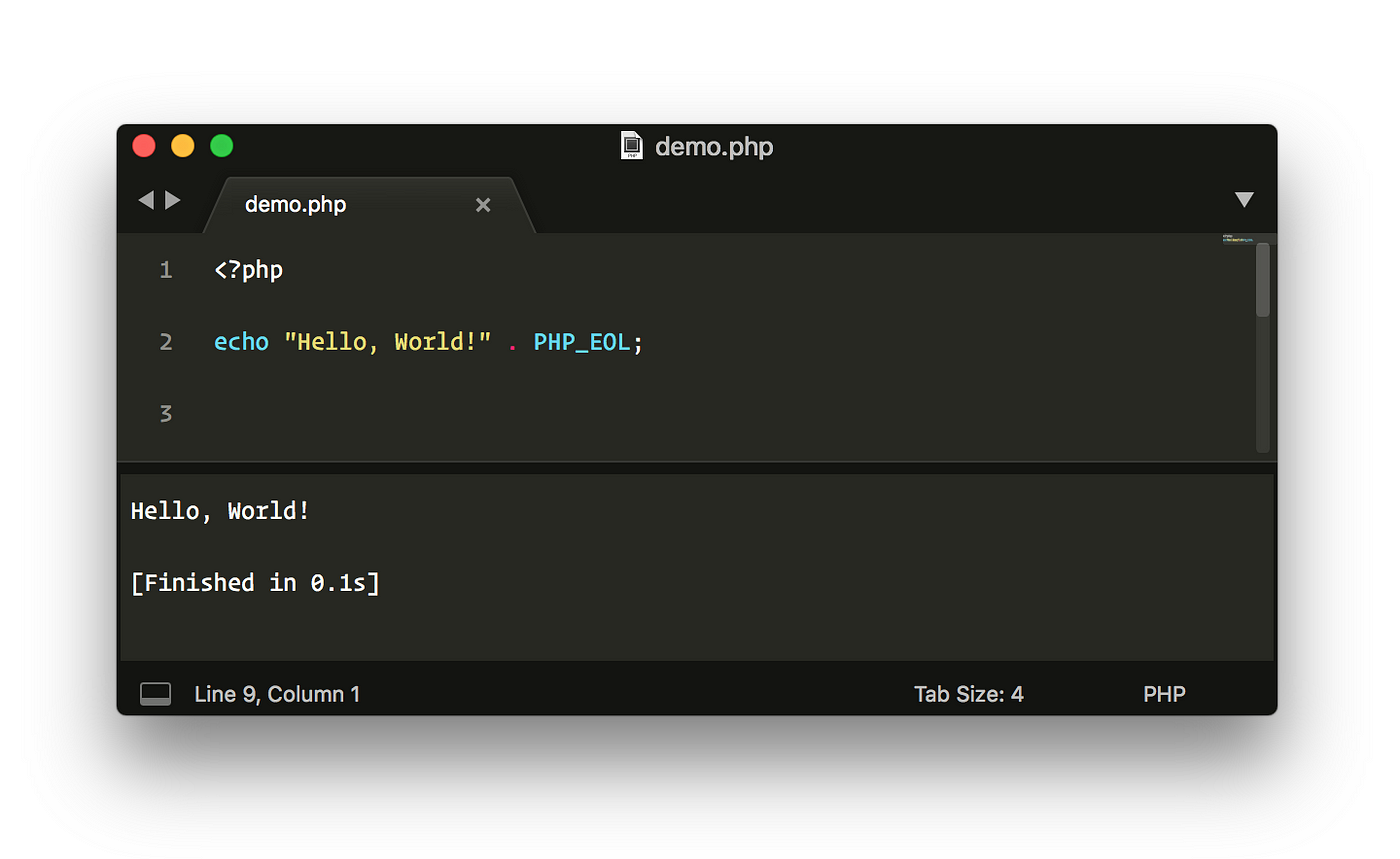
- #Create javascript build system in sublime text windows mac os x#
- #Create javascript build system in sublime text windows install#
- #Create javascript build system in sublime text windows archive#
- #Create javascript build system in sublime text windows download#
- #Create javascript build system in sublime text windows mac#
In fact, sometimes I'll click on a link and want to open it in Safari, because I want to print the page and I find Safari does that better than any other browser, but a few minutes later I'll click on a link and want to open it in Firefox, because I have that browser set up to handle downloading music and movies.
#Create javascript build system in sublime text windows mac#
I keep several web browsers on my Mac at all times, and I like to switch back and forth between them.
#Create javascript build system in sublime text windows mac os x#
In my my book, Mac OS X Snow Leopard for Power Users, I explained it this way:
#Create javascript build system in sublime text windows install#
To make your life easier, you need to install a browser selection tool. Since you're a web developer, you're going to (a) have more than one web browser on your computer, & (b) want to test your work in more than one browser. Some text editors (BBEdit, for instance) have a feature that lets you open your page in a browser, but Sublime Text does not. Next, create a shell script named minijs.sh.Say you're coding HTML in Sublime Text & you want to check how it looks in a browser. Unpack the repository and move the yuicompressor-2.4.8.jar file to a directory for safe keeping (you will run it from this directory). You will need to have Java version 1.4+ installed to use it.

#Create javascript build system in sublime text windows download#
If you are following along, you can download YUICompressor from the GitHub repository. Here is an example that will take you through each of these steps to create a command that will minify and obfuscate a JavaScript file, and then save it in the same directory with the new path -min.js: You have the option to include replacement tags in your system command string that allow you to pass command line arguments, the text in your clipboard, or the current working directory path to the aliased command: Glue Extension Replacement Tags TagĪdditional arguments that you include on the command line These Glue aliases can be called from the command line with the syntax: You can extend the built-in Glue commands with aliases that support system utilities, your own compiled executables, shell scripts, and source from any scripting language that is supported on your machine. Open one or more files by wildcard pattern Open one or more project files by filepathĭisplay the system PATH setting that is used by Glueĭisplay alphabetized list of your Glue user extensions Reveal current directory (default) or optional path in finder Open URL or local project file in default browser create new buffers, open files by wildcard), and perform other useful tasks: Command Glue includes its own set of built in commands that let you navigate around your directory structure, manipulate the editor (e.g.

In general the PATH is correct, but on some installs it may require a bit of assistance.įirst, check the PATH that Glue is using by entering the following command on the Glue command line:

Glue assigns a default user PATH from your environment PATH variable. The next step is to confirm that your PATH is properly set in Glue. You can confirm that it is installed by opening a project, right clicking in the sidebar and selecting the menu item Open Glue Terminal. Glue should automatically load in your editor after you install with any of the above approaches. Then, open your Sublime Text Packages directory using the Preferences > Browse Packages menu items and move the entire Glue directory into your Packages directory.
#Create javascript build system in sublime text windows archive#
Decompress the archive and rename it “Glue”. If you like to do things the good ole’ fashion way, download the source repository from GitHub (tar.gz | zip). Then git clone the Glue repository as a new directory named ‘Glue’ in your Packages directory with the following command: Open your Packages directory with the Sublime Text menu items Preferences > Browse Packages. You will see a confirmation in the status bar at the bottom of the editor window. Next, type ‘glue’ in the text input box and select the ‘Glue’ plugin option that is displayed in the Command Palette. Select the option Package Control - Install Package.

Open the Command Palette in your Sublime Text editor with the menus Tools > Command Palette and then type install in the text entry field. If you are using (//packagecontrol.io/, the install is simple. Glue works in Sublime Text versions 2 and 3 and these install instructions apply for either version. This includes any compiled or interpreted source that you develop which effectively allows you to create Sublime Text extensions in any programming language that your system supports. It features command entry within the Sublime Text editor window, standard output display in an editor view, and it works with most system utilities. Glue is a plugin that provides an interface to your shell from the Sublime Text editor.


 0 kommentar(er)
0 kommentar(er)
